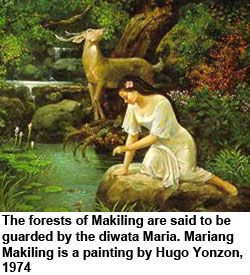The aswang, vampire, diwata happy in ‘heaven’
After going through an entire week of trying to demystify the various stories related to Jesus Christ, we are even now apparently still caught in the web of another heaven, one that is man-made, one that comes in various names and brands but is nonetheless as demanding.
We read the true-to-life story of four-year-old boy Colton from Nebraska who experienced heaven during his emergency operation. Apparently, during the operation, the boy started describing things and events no one had told him about — the sister who had a miscarriage; the great-grandfather who died even before he was born. And most especially, his experience with meeting Jesus who had a big horse and who loved children. No one, even the most skeptical would question the four-year-old. His experience Heaven is for Real has been brought to the big-screen which opened recently.
But what about the aswang, those creatures taking various forms other than human, and are seen only by those privileged to see them? On Wikipedia, the aswang is described as a vampire-like mythical creature in Filipino folklore, among the most feared and known in the Western Visayas by other names like tik-tik, wak-wak, bal-bal and sok-sok. The creatures are quiet and shy by day, and at night, transform into a cat, bat, boar or dog. According to folklore, they eat unborn fetuses, sucking them out of their mothers’ wombs.
In popular literature, the witch and the vampire are said to be the counterpart of the aswang, and have had books and movies created around their existence. There can be no vampire as popular as Edward Cullen, star of Twilight, which has gone from book to movie with equal success. Stephenie Meyer, author of Twilight, has confessed that the plot of the story came to her in a dream where the vampire was not a fearful creature, but a gentle presence that does not age nor die. The image of purity in a romantic relationship was embraced by a new generation who had gotten tired of the many trips taken to rid oneself of an unwanted child. Twilight told of how Edward had to steel himself from even touching his human love Bella Swan, much as he loved and wanted her.
One might wonder how we could possibly go from the miracle of the Son of God who dies on the cross for mankind to the miracle of a vampire who would rather die than deflower the love of his life who was human. There are, however, those who swear that both have more similarities than differences.
A favorite Filipino character is that of the diwata or spirit who lives in the forested mountains of Makiling, and is its guardian. Mt. Makiling still abounds with stories of people who lose their way in the mountain, their disappearances attributed to the diwata. A common story is one of mountaineers who forget their motto to “take nothing but pictures, kill nothing but time, leave nothing but footprints,†and find themselves running around in circles until they go back to clean up their campsite.
The diwata, nevertheless, can show appreciation as the late Behn Cervantes discovered during a program he directed calling for the conservation of Mt. Makiling. When the phenomenal singer Dulce reached the climax of her song praising nature, she raised her arms to the heavens in veneration, and lo and behold, a shower of golden leaves fell on the crowd in approval.
In a treatise titled Sa Pusod ng Lungsod: Mga Alamat, Mga Kababalaghan Bilang Mitolohiyang Urban, Eugene Evasco wrote: “Local urban legends about supernatural occurrences and mythological characters are intimately connected with the folk beliefs, philosophy and mythology of the country.
“Popular examples of these are the White Lady of Balete Drive, the Manananggal of Tondo, the Kambal-ahas of a popular mall, the Pugot-ulo in Tagaytay, and the Lost Souls in buildings that have existed prior to World War I and II.
“Interviews from various localities have provided the context of… the stories via yearlong documentations and transcriptions… The development of oral literature in the Philippines and the use of urban legends have effectively contributed to the production of popular culture and literature of the Philippines.â€
(E-mail your comments to [email protected] or text 0917-8991835.)
- Latest
- Trending






























